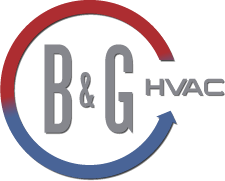
A furnace is often a background player in your home, ensuring you're warm during the cold winter months. It frequently isn't noticed until a malfunction appears.
One cause might be that your furnace has a cracked heat exchanger. It’s a potentially dangerous issue, so it’s worthwhile to familiarize yourself with the signs of a cracked heat exchanger and what you can do if you suspect that is the problem.
What Is a Heat Exchanger in a Furnace?
A heat exchanger transfers heat from the combustion chamber of your furnace to the air that circulates through the air ducts. It usually does this using coils or tubes that heat the air while functioning as a barrier to keep byproducts formed in the combustion chamber, called flue gasses, from leaking out into your home.
Is a Cracked Heat Exchanger Dangerous?
Thanks to its important role, it’s no surprise that a broken heat exchanger can be very dangerous. A damaged heat exchanger can allow dangerous gasses – including carbon monoxide, which can be lethal – to flow through your home.
For obvious reasons, don't ever run your heating if you suspect there's a crack in the heat exchanger, as letting it run could make the entire family ill. Call an HVAC professional as soon as possible if you are worried your furnace has a cracked heat exchanger that should be repaired.
Four Warning Signs of a Cracked Heat Exchanger:
- Furnace shuts off: Cracks in the heat exchanger can cause your furnace to turn off.
- Strange Smells: If the air escaping your furnace has a strong chemical odor, it may be a sign gas is leaking through cracks in your heat exchanger. These gasses, which may smell like formaldehyde, are a significant warning sign.
- Carbon monoxide alarm initiates or you recognize health problems: If a cracked heat exchanger is emitting carbon monoxide into your home, your carbon monoxide alarm should go off or household members could struggle with signs of carbon monoxide poisoning. Complications include headaches, dizziness, weakness, nausea, vomiting or feeling tired. If your alarm goes off or you feel unwell, exit the home right away and then call for help.
- Soot: If you see black sooty collecting near the exterior of your furnace, it’s more evidence something might be seriously wrong.
What You Can Do if the Furnace Heat Exchanger is Cracked
If you worry your furnace has a cracked heat exchanger, call a pro with extensive experience in furnace installation Marshalltown right away so they can inspect your system and, if necessary, perform a furnace heat exchanger replacement. Costs will differ depending on the situation, but estimates run in the neighborhood of $1,000 to $3,000.
Fortunately, the good news is that heat exchangers are often covered by the warranty. It's a good idea to confirm the warranty paperwork on your furnace, as while the warranty won't always cover the entire cost of repairs, it still may significantly reduce your bill.
How to Prevent a Cracked Heat Exchanger in Your Home
One of the easiest ways to avoid problems in your furnace overall is via consistent furnace maintenance. Furnaces work the best when they work efficiently. Contacting a trained professional to inspect your furnace for worn-out parts, clogged filters and other potential problems can keep you from getting a big bill later on.
It’s also helpful to inspect your furnace filters every few months – it’s encouraged some filters be replaced every 90 days or sooner if they are dirty or grimy. While the filters aren't connected to the heat exchanger itself, the strain of drawing air through a clogged filter makes your entire furnace work more vigorously to do its job. And the harder your furnace has to work, the more strain components like the heat exchanger will sustain.


